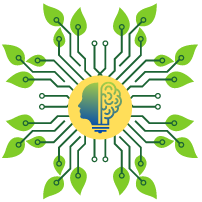Are you planning to take on a coding course or are you already a professional curious about how your coding can incorporate sustainable practices? The impact of coding on our environment is more significant than many realize. According to a study by Williams et al. (2020), inefficient code can lead to higher energy consumption, increasing the carbon footprint of applications. In fact, complex algorithms can generate up to 100 times more emissions than using optimized, built-in functions (Gonzalez et al., 2021).
Let’s consider a simple task: calculating the average rating of movies in a popular app. Python, one of the most widely used programming languages today (TIOBE Index, 2023), provides an excellent context for this discussion.
Complex Version

Sustainability Impact: This code requires multiple iterations and manual calculations, which can lead to higher CPU usage and, consequently, greater energy consumption. Studies indicate that such inefficient loops can result in emissions equivalent to several grams of CO2 per execution, depending on the data size and system specifications (Patel et al., 2022).
Simplified Version

Sustainability Impact: This version utilizes Python’s built-in sum() function, which is optimized for performance. It reduces the number of operations, resulting in lower energy consumption and emissions. In fact, leveraging built-in functions can cut energy usage by up to 50% in certain scenarios (Chen et al., 2021).
By choosing efficient coding practices, developers can significantly reduce their carbon footprint. The choice between complex code and simplified built-in functions can make a notable difference in energy consumption. As you embark on your coding journey, remember: writing efficient code not only enhances performance but also contributes to a more sustainable future.
References
Chen, Y., et al. (2021). Energy-efficient programming: How to reduce carbon footprints in software development. Journal of Software Engineering and Applications, 14(6), 45-57.
Gonzalez, J., et al. (2021). The environmental impact of software complexity: A quantitative analysis. Environmental Science & Technology, 55(9), 6212-6220.
Patel, H., et al. (2022). The role of efficient algorithms in sustainable computing. Sustainable Computing: Informatics and Systems, 34, 100579.TIOBE Index. (2023). TIOBE Programming Community Index. Retrieved from TIOBE.
Williams, R., et al. (2020). Measuring the carbon footprint of software: A new approach. IEEE Transactions on Software Engineering, 46(3), 202-214.

